Source: SenseAI
Jon Yongfook is the founder of the image and video generation tool Bannerbear. After leaving his job to start a business in 2019, he took on the challenge of building 12 products in 12 months. It wasn't until he was writing the 7th product that he realized he didn't care enough about the needs themselves, and the software he was writing wasn't something people were willing to pay for. So he concluded that he must explore a direction that he is interested in, in order to have the motivation to continue entrepreneurship. The reason for starting this company was also because he found himself needing to create a lot of social media images. Today, Bannerbear's MRR has exceeded $50,000, and Jon has shared 7 experiences for entrepreneurs on the product's official website, which are concise and worth considering.
AI-Native Entrepreneurial Interview Record
1. Product: Bannerbear
2. Product Launch Date: January 2020
3. Founder: Jon Yongfook

4. Product Introduction:
An online AI tool for image and video generation, helping users automatically generate images, videos, and animated GIFs for social media posts, website banners, product marketing, etc. It provides integration with APIs such as Zapier, Integromat, Google Sheets, etc.
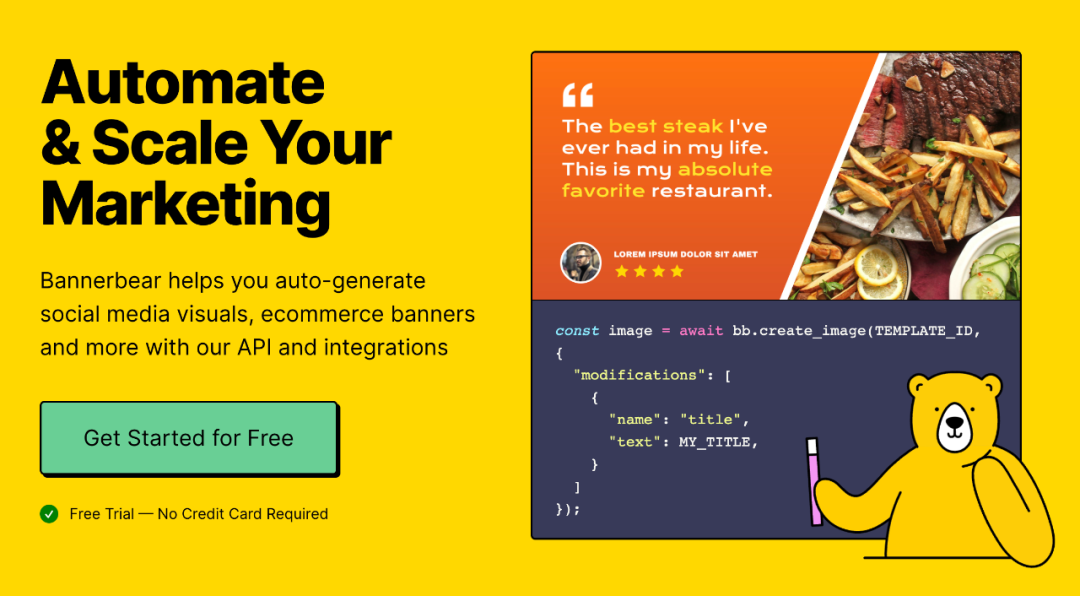
5. Development Story:
Jon found himself needing to create many social media images, so he created a product called Previewmojo, which generates images in batches through templates, and it generated approximately $400 MRR after being released on ProductHunt. After finding the direction he was interested in, Jon realized that the initial product positioning was too niche and it was difficult to find paying users. Therefore, he renamed it to Bannerbear, expanded its application scenarios, and allowed users to generate images on various social media platforms such as Twitter and IG. After being released on ProductHunt, it ranked first on the same day.
After trying Shopify image generation, he found that he couldn't understand the needs of the shop owners, but he could understand the needs of programmers better, so he launched an API version that can generate images through code and commands, generating approximately $500 MRR. Later on, he spent more time marketing on social media. In addition to promoting the product, he also shared his experiences in growth, entrepreneurial failures, and product milestones, which also contributed to the steady growth of product revenue.
Bannerbear MRR Growth Curve
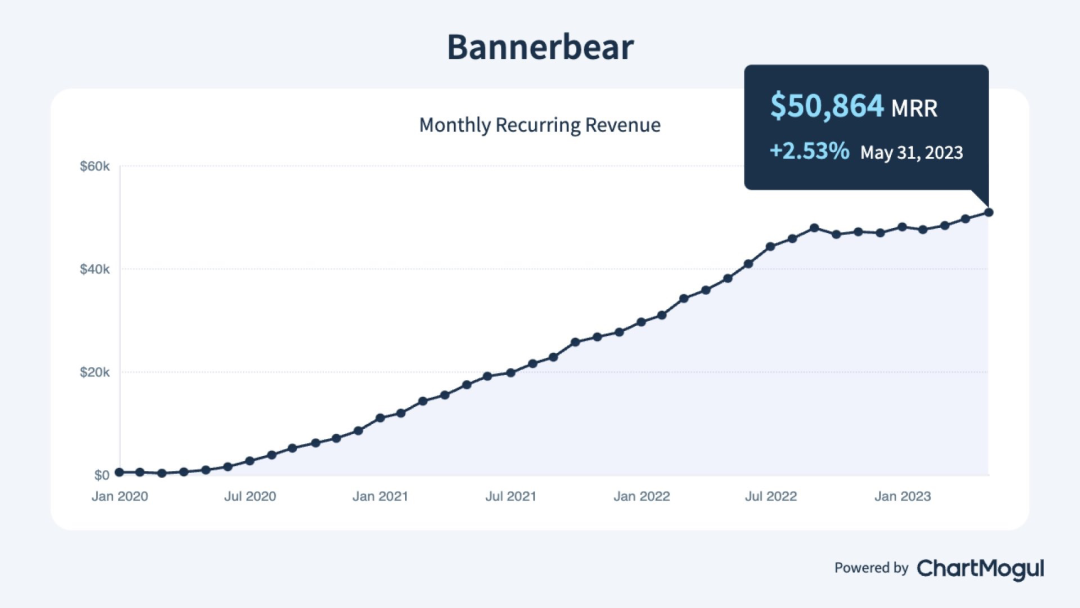
01. High Fit between Product and Founder
In the early stages of a startup, the "fit between product and founder" is often an underestimated quality. In other words, we need to consider why the founder is "you" in the process of pushing the product to the market. Does the founder have industry experience? Do they have some special technical knowledge that can bring advantages? Most importantly, is the founder truly passionate about the business?
This is very important because it is a highly competitive market. You will face competitors and imitators. Genuine passion will be an important factor in whether you give up early or persist (while your competitors give up). This is the ultimate advantage a founder can have.
02. Don't Price Too Low
The principle is simple, but early-stage founders need to be more aware of this. Jon suggests that SaaS companies should not sell anything for $5-10, as it is difficult to build a subscription business on this basis (unless you have venture capital and can accelerate growth through investment). More importantly, low prices attract low-value customers.
Have you ever seen customers raging in App Store reviews and complaining about a service they purchased for $3? No one wants that to happen to them. Targeting high-end enterprise customers usually surrounds you with high-quality customers who value the services provided by the company, making it easier for the company to achieve sustainable profitability.
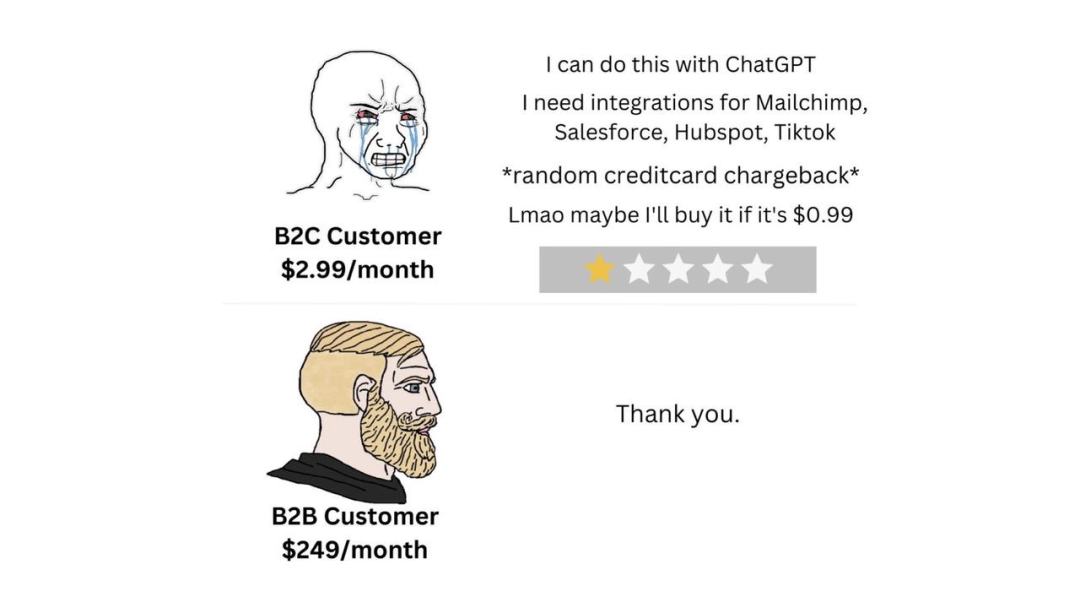
03. Find Effective Methods and Stick to Them
If you have come up with some marketing strategies that can yield results, stick to them. Don't be too fixated on complex product matters. Doing the same thing every day is boring and not particularly creative, but it's also difficult. If you persist, you can amplify your advantages.
Jon went through a period of continuous growth at Bannerbear. Typically, he would spend a week writing code, a week marketing on Twitter/Blog, with a two-week cycle, and never stopped.
Jon described his growth curve as "a straight diagonal line."
04. Create Free Tools
If you are a technical founder and want to know how to market, pay more attention to this. Jon believes that one of the highest returns on time investment is creating free tools. Successful tool products will cause a sensation in the market, and users will be willing to talk about them and even spread them, bringing continuous traffic to the product.
Bannerbear has free certificate generators, Tweetagram (Twitter to Instagram) tools, and more. These tools continue to bring traffic. But more importantly, they have generated many backlinks to these tools. Although free tools may not necessarily convert users into paying customers, they will certainly help with traffic to the product's backlinks, search clicks, and overall search rankings.
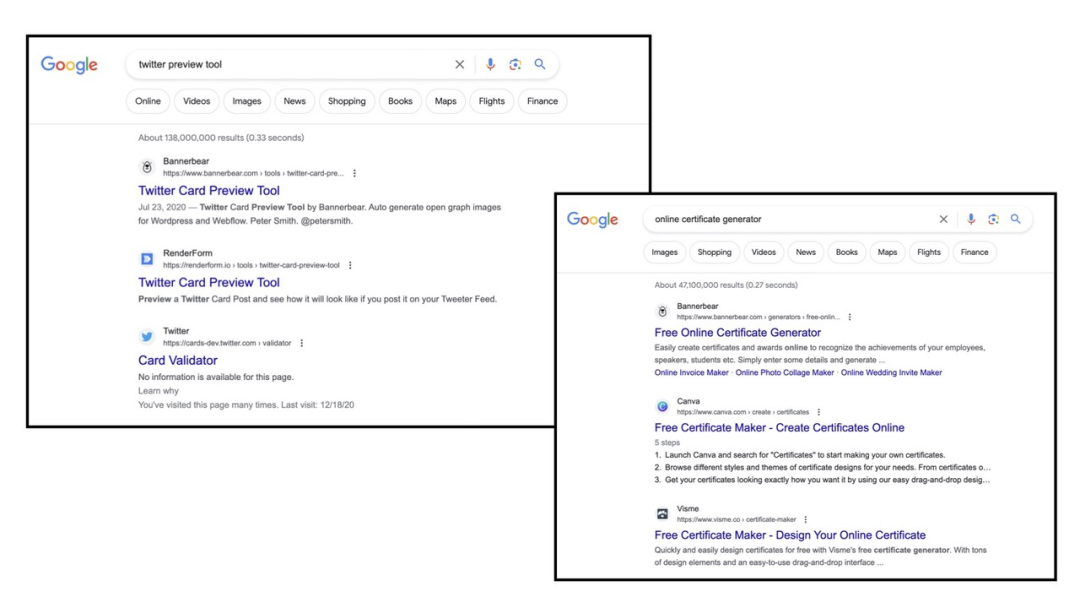
05. Create Interesting Content
In fact, this is a synonym for "be interesting." Being interesting gives people a reason to talk about you. One way to do this is to create "flagship" content. This type of content is something that people are willing to share now and in the future.
In addition to the product, Bannerbear has done some other things to show its interesting side and share content about the product. For example, the company underwent a large-scale rebranding last year (the yellow bear logo), and employees did some interesting things, such as making teddy bear merchandise. This can help the company stay ahead and give people a reason to remember the product. In today's competitive landscape, founders need to constantly think about this.
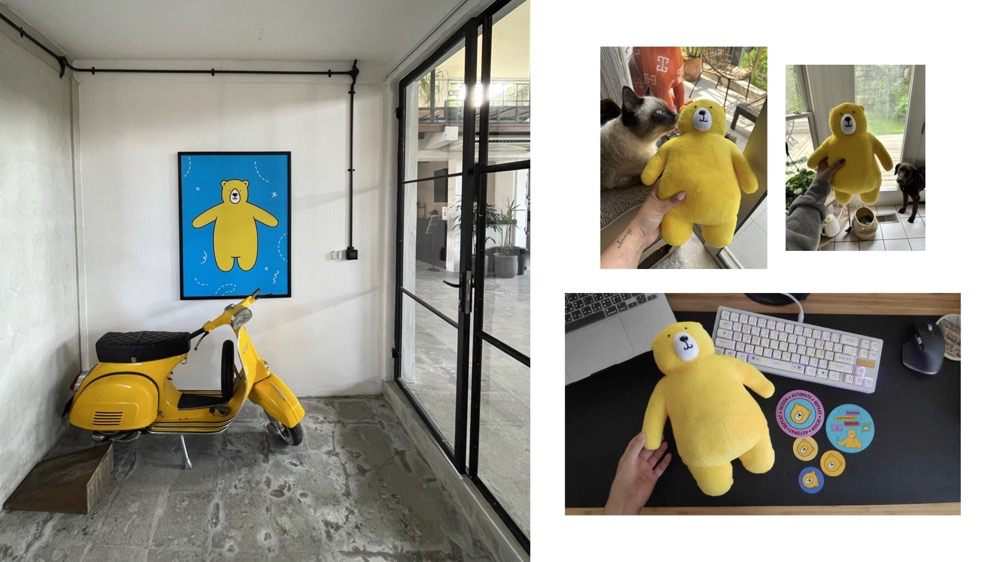
06. Hire When Needed
Jon mentioned, "When I have a specific workload that I can no longer handle and need someone to take over, hiring becomes more effective." Customer support is a typical example and is likely the first role most independent founders hire for.
When hiring for a more "ambitious" position, the effectiveness of hiring is often not very good. This is not part of the founder's current workload, but it is one of the directions the company wants to explore. This type of work is not as clear and requires more guidance and feedback from the founder. But in a self-sufficient small company, the founder's time is limited and they may not be good at guiding this role.
07. Don't Postpone Important Technical Migrations Indefinitely
Last year, Bannerbear suffered a DDoS attack (Distributed Denial of Service). Jon mentioned, "If we had used Cloudflare, all of this could have been avoided. But although the migration was on my roadmap, I still didn't find the time to do the formal migration."
The lesson here is not to postpone those important technical migrations indefinitely. Founders should incorporate them into the development calendar and adhere to the schedule. As a technical founder, it is necessary to review the stability of the system every year and evaluate one or two important technical upgrades—such as major version upgrades of some underlying technologies, migration of some services, and so on.
These are some of Jon's experiences.
Reference materials:
https://www.bannerbear.com/blog/7-lessons-growing-a-bootstrapped-saas-to-50k-mrr/
免责声明:本文章仅代表作者个人观点,不代表本平台的立场和观点。本文章仅供信息分享,不构成对任何人的任何投资建议。用户与作者之间的任何争议,与本平台无关。如网页中刊载的文章或图片涉及侵权,请提供相关的权利证明和身份证明发送邮件到support@aicoin.com,本平台相关工作人员将会进行核查。




